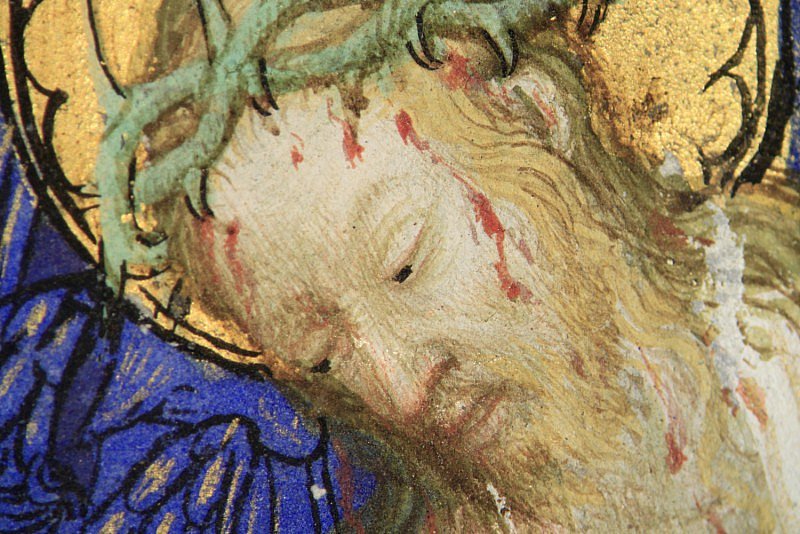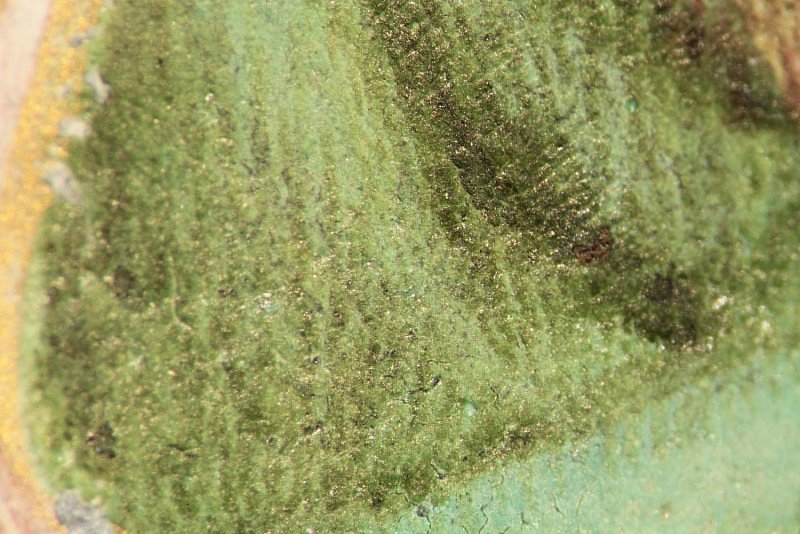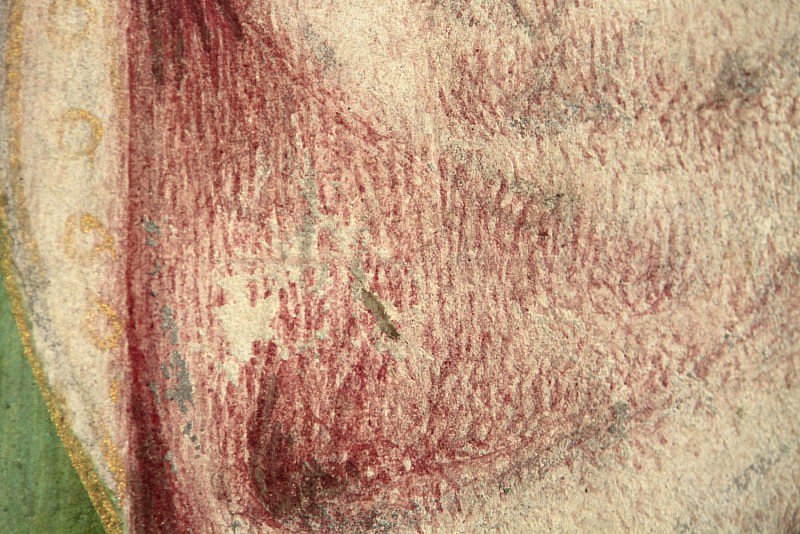Underdrawing
Artists' Techniques
The extensive underdrawing in brown ink which is revealed in the majority of the illuminations, both through thinly laid colours or paint losses and in the near-infrared images, is crucial in distinguishing between the three main artists.
A substantial amount of underdrawing and frequent changes of mind at the painting stage are typical of the Giac Master and the two assistants who painted large miniatures.
The Rohan Master’s work is characterised by elaborate drawing of an idiosyncratic nature. Strings of curly loops resembling doodles and brushed over with a grey ink wash cascade down fabric folds or congregate into pools of drapery.
The Madonna Master instead painted both of his miniatures freehand: neither shows any underdrawing.



Last Judgement (Seven Requests to our Lord)
This miniature displays the salient features of the Rohan Master’s style: the juxtaposition of super-large and extra-small, Christ’s facial type (hotspot 1) and skeletal frame, and the background angels highlighted in gold ink. The idiosyncratic underdrawing is visible to the naked eye through the thin pink washes on Christ’s drapery. Infrared imaging clearly reveals the festoons of loops cascading down or congregating into pools of drapery folds (see Infrared Layer). On the surface, the folds and shadows are defined by thin parallel strokes of dark green and pink over the lighter green and white base layers (hotspots 2 and 3).
